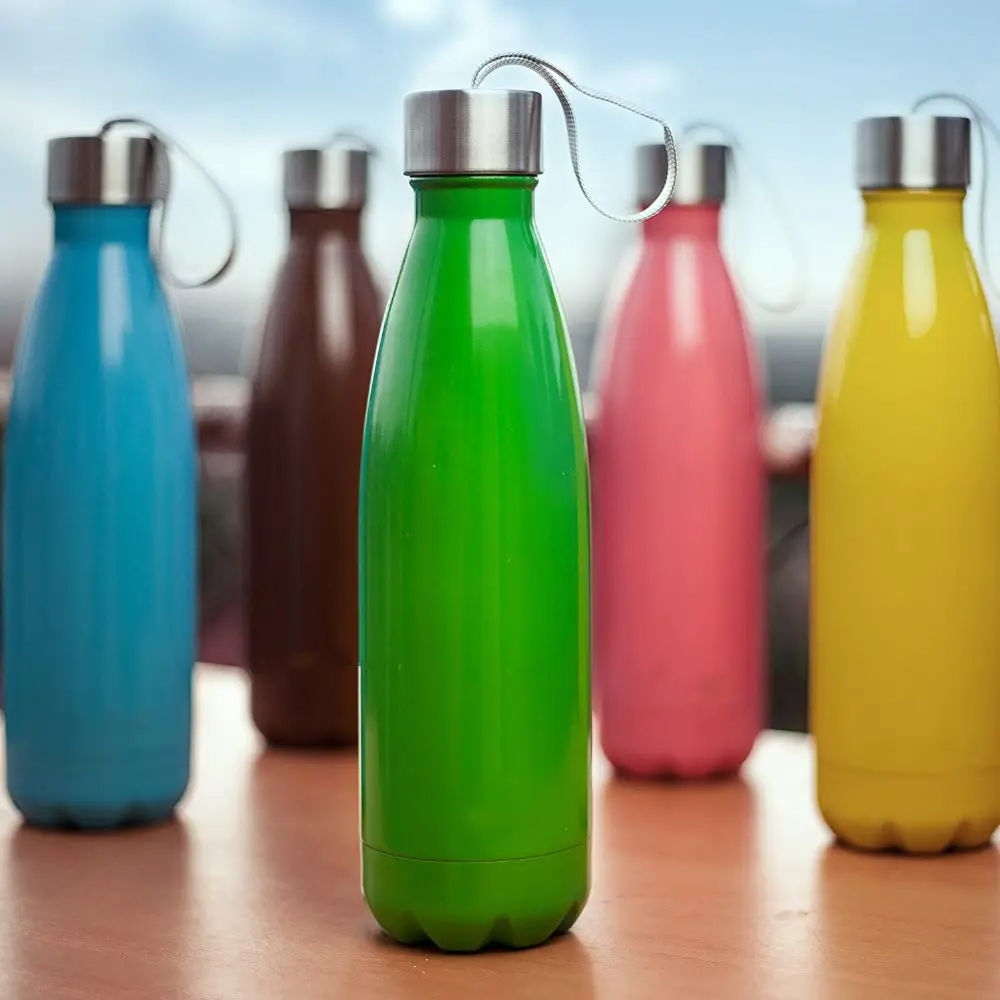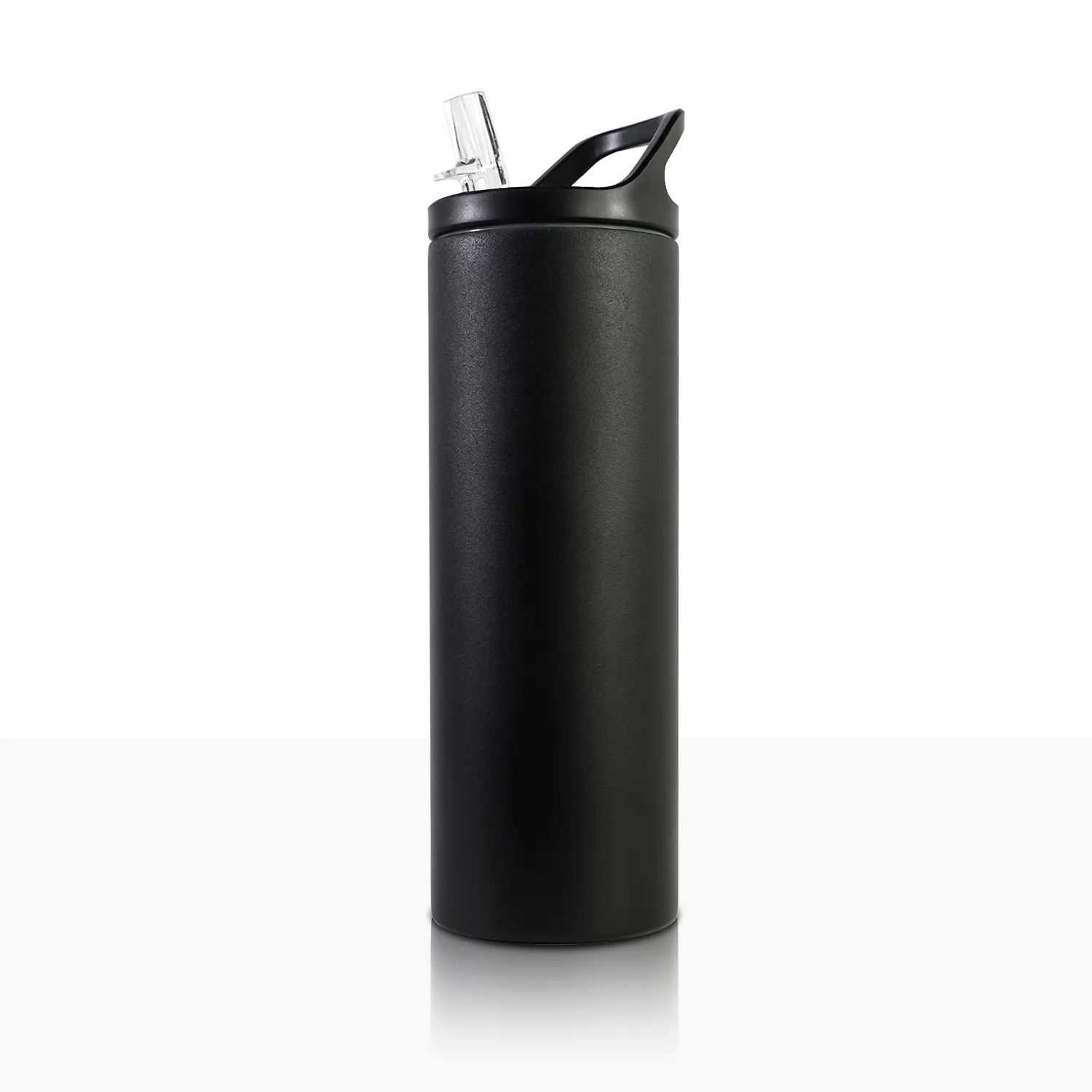Introduction

When it comes to keeping drinks cold, the myth about putting thermos water bottles in the refrigerator has caused quite a stir. But what's the science behind these insulated wonders, and how does refrigerating them impact their performance?
The Myth about Putting Thermos Water Bottles in the Refrigerator
For years, there's been a misconception that refrigerating thermos water bottles can help keep drinks colder for longer. However, this belief has been debunked by experts who warn against this practice.
The Science Behind Thermos Water Bottles
Thermos water bottles are designed with a double-wall vacuum insulation that creates an airless space between two walls, virtually eliminating temperature change within the bottle. This technology is what makes them so effective at keeping drinks hot or cold. In addition to the double-wall vacuum insulation, Thermos water bottles also feature a reflective layer that helps to reflect heat back into the bottle, further enhancing its ability to maintain the temperature of the liquid inside. This combination of advanced insulation and reflective technology sets Thermos water bottles apart from other insulated containers on the market.
The Impact of Refrigerating Thermos Water Bottles
Refrigerating thermos water bottles can actually have adverse effects on their performance and longevity. From potential damage to the vacuum seal to condensation build-up, there are several reasons why it's not recommended to chill your thermos bottle. When you refrigerate a thermos bottle, the sudden change in temperature can cause the materials to expand and contract, leading to potential damage to the vacuum seal. Additionally, condensation can form inside the bottle when you take it out of the refrigerator, which can compromise its insulation properties and lead to a decrease in performance over time.
Why can't you put the thermos water bottle in the refrigerator

Many people wonder, Why can't you put the thermos water bottle in the refrigerator? The answer lies in the potential damage to the vacuum seal. When a thermos is subjected to cold temperatures, it can cause the seal to contract, leading to air leakage and reduced insulation performance.
The Potential Damage to the Vacuum Seal
The vacuum seal in a thermos bottle is crucial for maintaining temperature. When exposed to cold temperatures in the fridge, the metal or glass of the thermos contracts, potentially compromising this seal. This can result in air seeping into the bottle, reducing its ability to keep liquids hot or cold for extended periods.
The Risk of Condensation Build-up
Another reason why you shouldn't put a thermos water bottle in the refrigerator is the risk of condensation build-up. Placing a cold thermos into a warmer environment can lead to moisture forming on both the inside and outside of the bottle. This not only affects its insulation but also creates a slippery surface that could lead to accidents.
Furthermore, the condensation build-up can also affect the taste and quality of the water or beverage stored in the thermos. The moisture that forms inside the bottle can dilute the drink, making it less flavorful and enjoyable. Additionally, if the condensation is not properly dried or cleaned, it can lead to mold or bacterial growth, posing health risks to anyone consuming from the thermos.
The Effect on Insulation Performance
The insulation performance of a thermos relies on maintaining a consistent temperature inside the bottle. Refrigerating it disrupts this balance and can lead to reduced effectiveness at keeping drinks hot or cold for as long as advertised.
While refrigerating a thermos may not be ideal for maintaining its insulation performance, there are alternative methods to keep your drinks hot or cold for extended periods of time. One option is to preheat or pre-chill the thermos before adding your beverage. This can help to offset the effects of refrigeration and ensure that the desired temperature is maintained for longer. Additionally, using insulated bottle sleeves or jackets can provide an extra layer of protection against temperature fluctuations, further enhancing the thermos's ability to keep drinks hot or cold.
Now that we understand why refrigerating a thermos is not ideal, let's explore whether there are any alternatives or exceptions when it comes to keeping your drinks cold or hot for extended periods of time.
Can you put a thermos in the fridge?

Exploring Different Types of Thermos Bottles
When it comes to exploring different types of thermos bottles, it's important to consider the specific design and construction of each one. Some thermos bottles are designed with materials that can withstand refrigeration, while others may not hold up as well. It's essential to research and compare various options to find the best thermos bottle for your needs.
Understanding Manufacturer Recommendations
Manufacturer recommendations play a crucial role in determining whether you can put a thermos in the fridge. It's essential to carefully read and follow the guidelines provided by the manufacturer to avoid damaging the thermos bottle or compromising its performance. By understanding and adhering to these recommendations, you can ensure that your thermos bottle remains in optimal condition.
When it comes to putting a thermos in the fridge, understanding the manufacturer recommendations is crucial. Different materials may have different temperature tolerances, and the manufacturer's guidelines will provide insight into whether your specific thermos can handle the cold temperatures of the refrigerator. By following these recommendations, you can avoid any potential damage to the thermos bottle and ensure that it continues to perform optimally for a long time.
The Difference in Materials
The materials used in thermos bottles can vary significantly, impacting their ability to withstand refrigeration. Some materials may be more susceptible to damage from temperature changes, while others are specifically designed for cold storage. Considering the difference in materials is essential when determining whether you can safely refrigerate a particular thermos bottle.
It's important to note that the insulation in thermos bottles also plays a significant role in their ability to withstand refrigeration. Some thermos bottles have superior insulation that can handle the cold temperatures of a refrigerator, while others may not be as effective. The type and quality of insulation can determine whether a thermos bottle is suitable for refrigeration, so it's crucial to consider this factor when deciding whether to store it in the fridge.
Can I put a thermos in the fridge

When it comes to preserving the integrity of your thermos water bottle, there are alternatives to refrigerating it that can help maintain its performance. Instead of putting it in the fridge, consider using insulated lunch bags or coolers to keep your drinks cold on the go without compromising the vacuum seal or insulation.
Alternatives to Refrigerating Thermos Bottles
One alternative to refrigerating your thermos water bottle is to pre-chill it before adding your cold beverage. Simply fill the bottle with ice water and let it sit for a few minutes before pouring out the ice and adding your drink. This helps maintain the temperature without risking damage to the vacuum seal or insulation.
Tips for Keeping Drinks Cold Without the Fridge
If you're looking for ways to keep your drinks cold without relying on the fridge, consider using reusable ice packs or freezing water bottles to place alongside your thermos in an insulated bag or cooler. This will help maintain a cold temperature without exposing your thermos water bottle to potential damage from condensation build-up.
How to Maximize Insulation Performance
To maximize insulation performance and keep drinks colder for longer periods, try pre-chilling both the beverage and the thermos itself before filling it up. Additionally, avoid opening and closing the thermos frequently, as this can let warm air in and compromise its ability to keep things cold.
Remember that while refrigerating a thermos water bottle may seem like a quick fix for keeping drinks cold, there are alternative methods that can help maintain its performance and longevity without risking potential damage. By exploring different options for keeping beverages cold and maximizing insulation performance, you can ensure that your thermos continues to deliver on its promise of keeping things cold when you need it most.
Thermoflask bottle

When it comes to comparing Thermoflask bottles to other brands, Thermoflask stands out for its durable construction and superior insulation. Unlike some competitors, Thermoflask bottles are designed to withstand the rigors of everyday use without compromising on performance or quality.
Comparing Thermoflask Bottles to Other Brands
Thermoflask bottles are known for their exceptional durability and insulation, making them a top choice for those who want a reliable way to keep their drinks cold. When compared to other brands, Thermoflask consistently outperforms in terms of maintaining temperature and withstanding wear and tear.
Reviews and Testimonials on Thermoflask Performance
Customers rave about the performance of Thermoflask bottles, noting that their drinks stay cold for hours on end even in hot weather. Testimonials highlight the reliability and effectiveness of Thermoflask bottles, making them a popular choice for outdoor enthusiasts and daily commuters alike.
Customers also appreciate the durability of Thermoflask bottles, with many noting that they have stood the test of time and maintained their performance even after years of use. This long-term reliability reassures customers that their investment in a Thermoflask bottle will continue to pay off for years to come, making it a smart choice for those looking for a sustainable and cost-effective hydration solution. In addition to keeping drinks cold, customers also praise the ability of Thermoflask bottles to keep hot beverages at the perfect temperature for extended periods, adding another layer of versatility to their appeal.
Long-term Impact on Thermoflask Quality
Over time, users report that their Thermoflask bottles maintain their quality and performance, proving that these bottles are built to last. The long-term impact of using a Thermoflask bottle is evident in its ability to consistently keep drinks cold without any compromise in quality or functionality.
Users also appreciate the durable construction of Thermoflask bottles, noting that they can withstand everyday wear and tear without showing signs of damage or deterioration. This long-lasting quality means that users can rely on their Thermoflask bottle for years to come, making it a sustainable and cost-effective choice for hydration on the go. Additionally, the consistent performance of Thermoflask bottles over time speaks to the brand's commitment to providing high-quality products that stand the test of time.
Hydroflask in fridge

The Impact of Refrigerating Hydroflask Bottles
Refrigerating your Hydroflask bottle can have a negative impact on its performance. The extreme temperature change can cause the vacuum seal to weaken, leading to a loss in insulation effectiveness. Additionally, condensation build-up inside the bottle can compromise the quality of your drinks.
Customer Experiences with Refrigerating Hydroflask
Many customers have reported experiencing issues with their Hydroflask bottles after refrigerating them. Some have noticed a decrease in insulation capabilities, while others have encountered leaks and seal damage. It's best to heed manufacturer recommendations and avoid putting your Hydroflask in the fridge.
Best Practices for Hydroflask Maintenance
To maintain the quality of your Hydroflask, it's important to follow proper maintenance practices. This includes hand-washing with a mild detergent and avoiding exposure to extreme temperatures like those found in the refrigerator or freezer. Storing your Hydroflask at room temperature will help ensure its longevity.
Remember, when it comes to preserving the performance of your thermos water bottle, it's crucial to understand how different factors like temperature can impact its functionality. By following best practices and avoiding refrigeration, you can ensure that your thermos water bottle continues to keep your drinks cold as advertised!
Conclusion

When it comes to keeping your drinks cold, thermos water bottles are a reliable choice. They are designed to maintain the temperature of your beverages for extended periods, making them perfect for on-the-go use. However, the verdict is clear: you should avoid putting your thermos water bottle in the refrigerator. Doing so can compromise the vacuum seal, lead to condensation build-up, and affect insulation performance. To extend the lifespan of your thermos water bottle, it's best to follow manufacturer recommendations and explore alternative methods for keeping your drinks cold without using the fridge.
Do Thermos Keep Things Cold As Advertised?
Yes, thermos water bottles are highly effective at keeping drinks cold as advertised. With their double-wall vacuum insulation and durable materials, they can maintain the temperature of your beverages for hours on end. However, refrigerating them can have adverse effects on their performance and longevity.
The Verdict: Should You Refrigerate Your Thermos Water Bottle?
In short, no - you should not refrigerate your thermos water bottle. The potential damage to the vacuum seal, risk of condensation build-up, and impact on insulation performance make it best to avoid this practice altogether. Instead, consider exploring alternative methods for keeping your drinks cold without compromising the quality of your thermos water bottle.
Ways to Extend the Lifespan of Your Thermos Water Bottle
To ensure that your thermos water bottle lasts as long as possible, be sure to follow manufacturer recommendations regarding care and maintenance. Additionally, consider investing in a high-quality brand like Thermoflask or Hydroflask that is known for its durability and performance over time.
